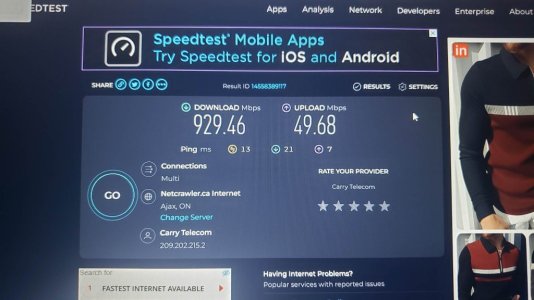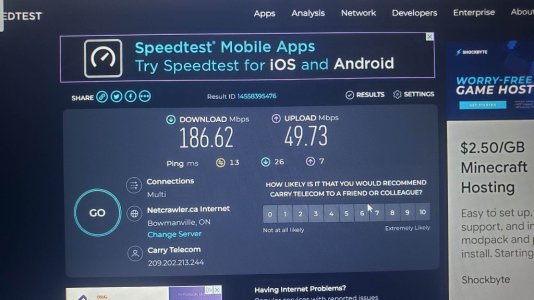So I upgraded my internet from VDSL I was getting 25mbs up and 10mbs down. I switch to a coble net provider. 1000mbs down 50 mps up. When I connect my laptop directly to the cable modem I obtain thes speeds.
When i connect my laptop top the the lan pot on the asus tr-n66u and wan to the cable modem, I lose 600mbs of speed. Attached second pic.. Any idea what going on or is this a hardware limitation to this router dispite it being a gigabit router.
thanks for your input..
When i connect my laptop top the the lan pot on the asus tr-n66u and wan to the cable modem, I lose 600mbs of speed. Attached second pic.. Any idea what going on or is this a hardware limitation to this router dispite it being a gigabit router.
thanks for your input..



